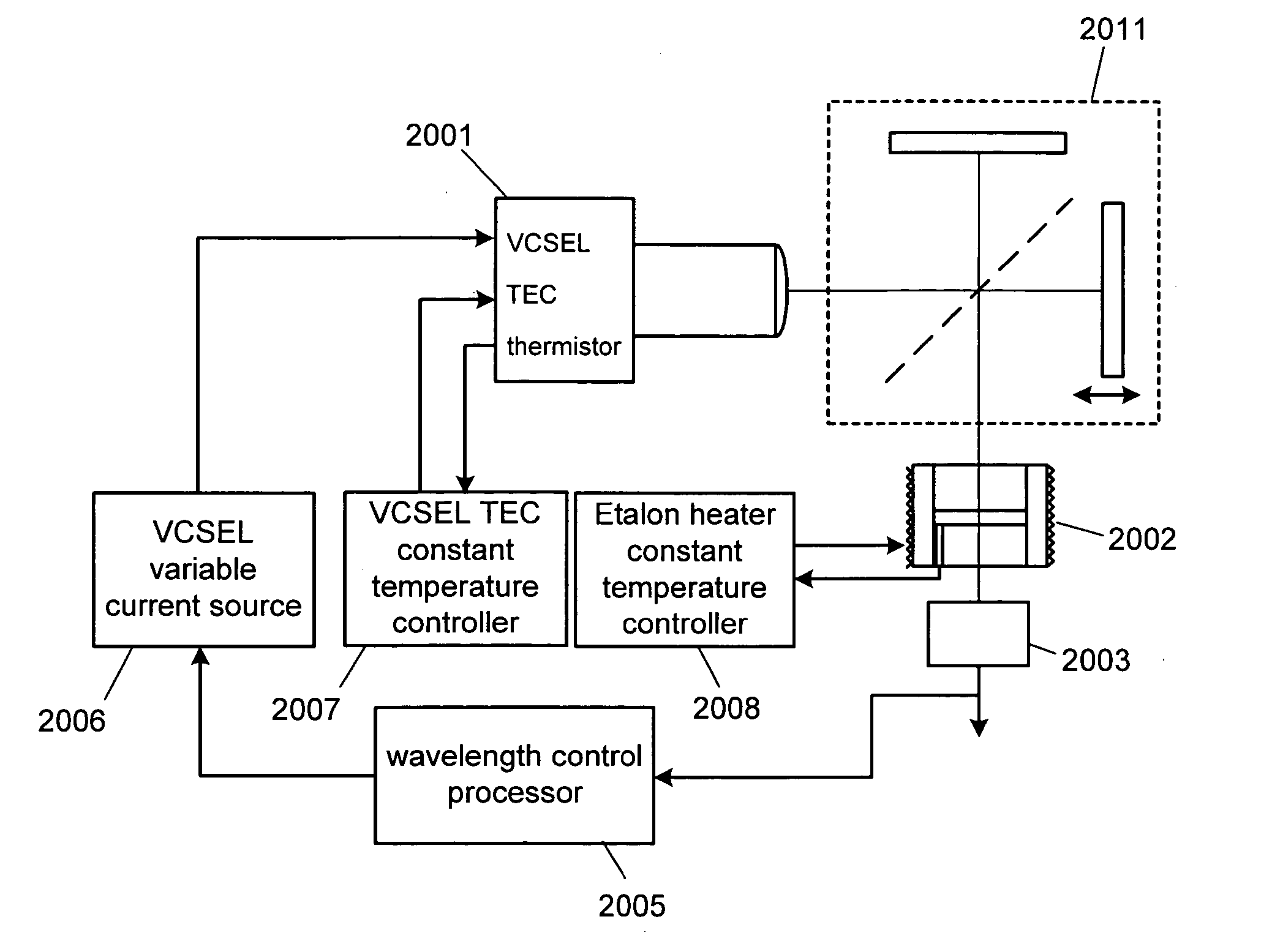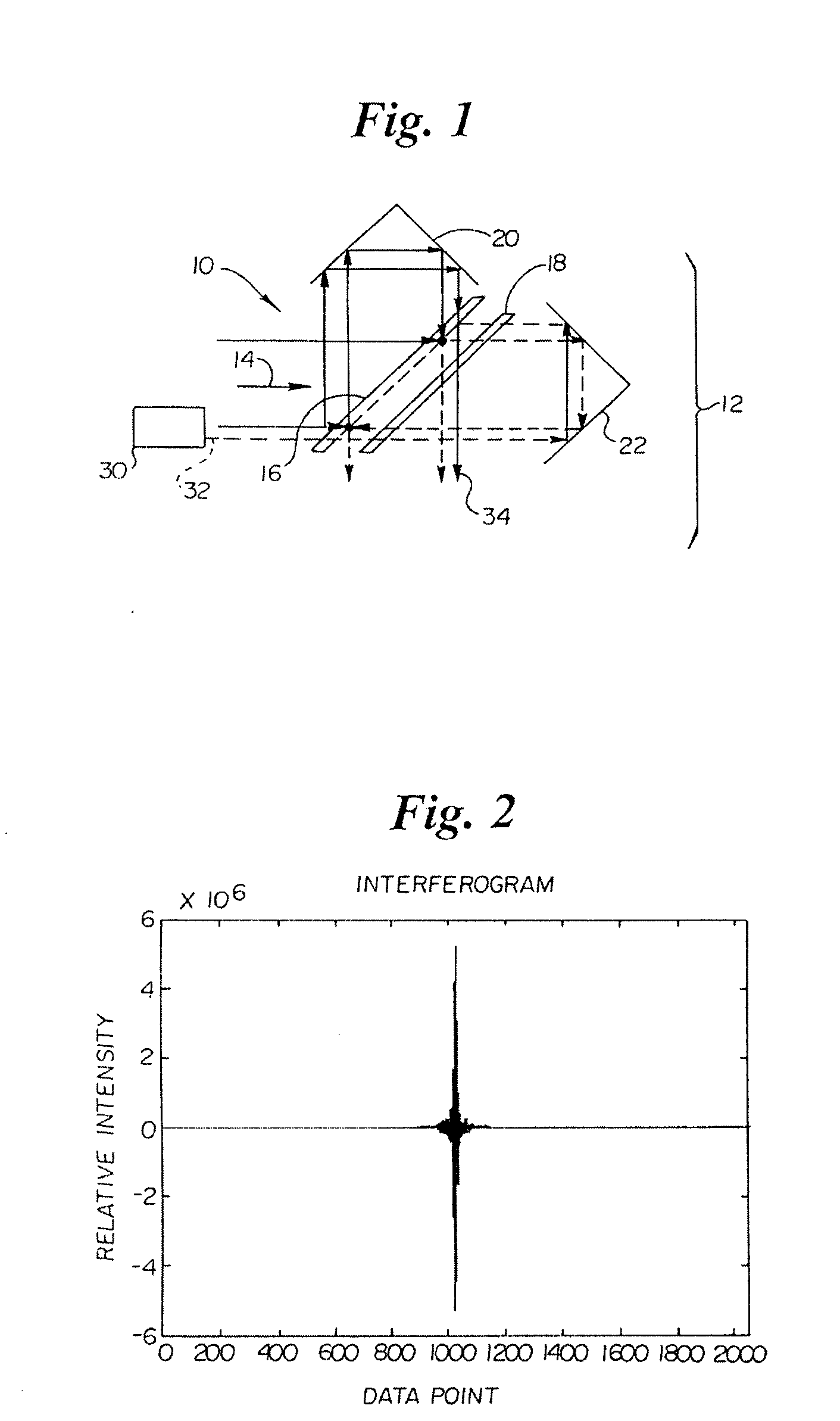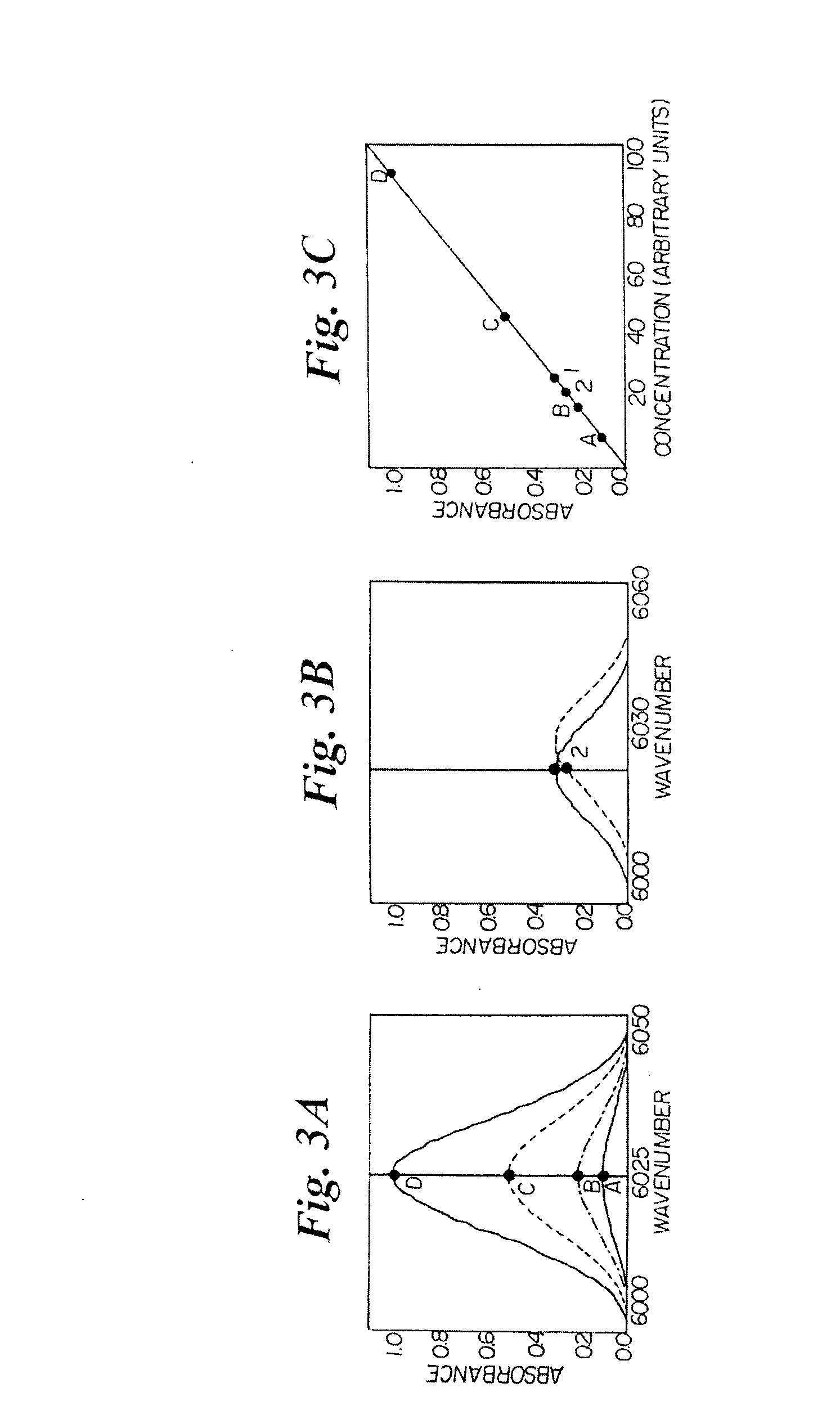Optical spectroscopy incorporating a vertical cavity surface emitting laser (VCSEL)
a vertical cavity surface and laser technology, applied in the direction of optical radiation measurement, interferometric spectrometry, instruments, etc., can solve the problems of inherently incorrect spectra, significant additional electronics required for controlling wavelength stability, and davis et al. do not disclose the control and correction of vcsel lasing wavenumber shifts
- Summary
- Abstract
- Description
- Claims
- Application Information
AI Technical Summary
Benefits of technology
Problems solved by technology
Method used
Image
Examples
Embodiment Construction
Until the late 1960's, FTIR spectrometry was largely unaccepted as a useful analytical method due in part to poor scan to scan reproducibility. The advent of rare-gas lasers, specifically the helium-neon laser, allowed the direct monitoring of the moving mirror position in an interferometer. Using a helium-neon (HeNe) laser, which can be obtained with wavelength stability to nine digits of precision, the position of the moving mirror could be elucidated by finding the zero crossings of the laser's interferogram. Consequently, interferograms can be digitized at precisely equal intervals of mirror position, where each interval corresponds to a distance of exactly half of a wavelength of the laser line. The result of the application of a HeNe reference was an internal wavenumber axis standard for measurements on FTIR spectrometers. In addition, some interferometric applications use integral numbers of laser zero crossings to define the total distance traveled by the moving mirror and ...
PUM
 Login to View More
Login to View More Abstract
Description
Claims
Application Information
 Login to View More
Login to View More - R&D
- Intellectual Property
- Life Sciences
- Materials
- Tech Scout
- Unparalleled Data Quality
- Higher Quality Content
- 60% Fewer Hallucinations
Browse by: Latest US Patents, China's latest patents, Technical Efficacy Thesaurus, Application Domain, Technology Topic, Popular Technical Reports.
© 2025 PatSnap. All rights reserved.Legal|Privacy policy|Modern Slavery Act Transparency Statement|Sitemap|About US| Contact US: help@patsnap.com



